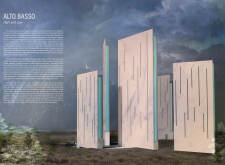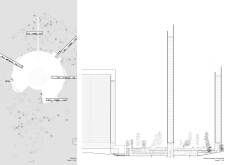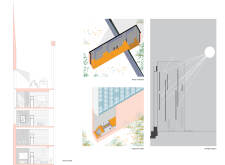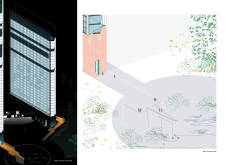5 key facts about this project
The Alto Basso project stands out by combining high-rise towers with an organic crater, creating an inviting urban space. Located in a bustling environment, the design aims to encourage community interaction while emphasizing the visual impact of its structures. The concept revolves around verticality, presenting a series of sleek, thin towers that reflect contemporary urban living.
Design Concept and Aesthetics
This architectural effort plays with contrasting elements. The tall, polished towers emerge from the natural, rocky surface of the crater. This contrast enhances the overall look and helps narrate the relationship between the built and natural environments. The towers echo traditional silhouettes while adapting to modern city needs, creating a cohesive feel.
Materials and Sustainability
Materials are chosen for their visual appeal and practical qualities. The towers feature glass surfaces that reflect light, creating a bright and open atmosphere inside. A stone wall on the southern side of the development not only protects against direct sunlight but also incorporates solar panels to support energy needs. This attention to sustainability reflects a growing focus on responsible design.
Community Engagement
The crater serves as a center for the community. It promotes public interaction and connects the upper structures to the ground level. The design incorporates slopes and recesses that resemble the natural landscape, providing areas for relaxation and gathering. A large cistern placed in the center collects rainwater. This feature highlights the commitment to managing resources effectively.
Circulation and Connection
The layout encourages movement through the use of ramps and viewing platforms that connect different spaces. These elements bring together the shops and cafes in the crater with the offices and apartments above. The overall arrangement allows for a lively environment where people can easily access various activities while appreciating the design’s features.
In this project, thin windows enhance the relationship between indoor spaces and the natural world outside. These details not only add to visual appeal but also help occupants feel connected to their surroundings, enhancing the experience of life within a vertical urban landscape.





















































